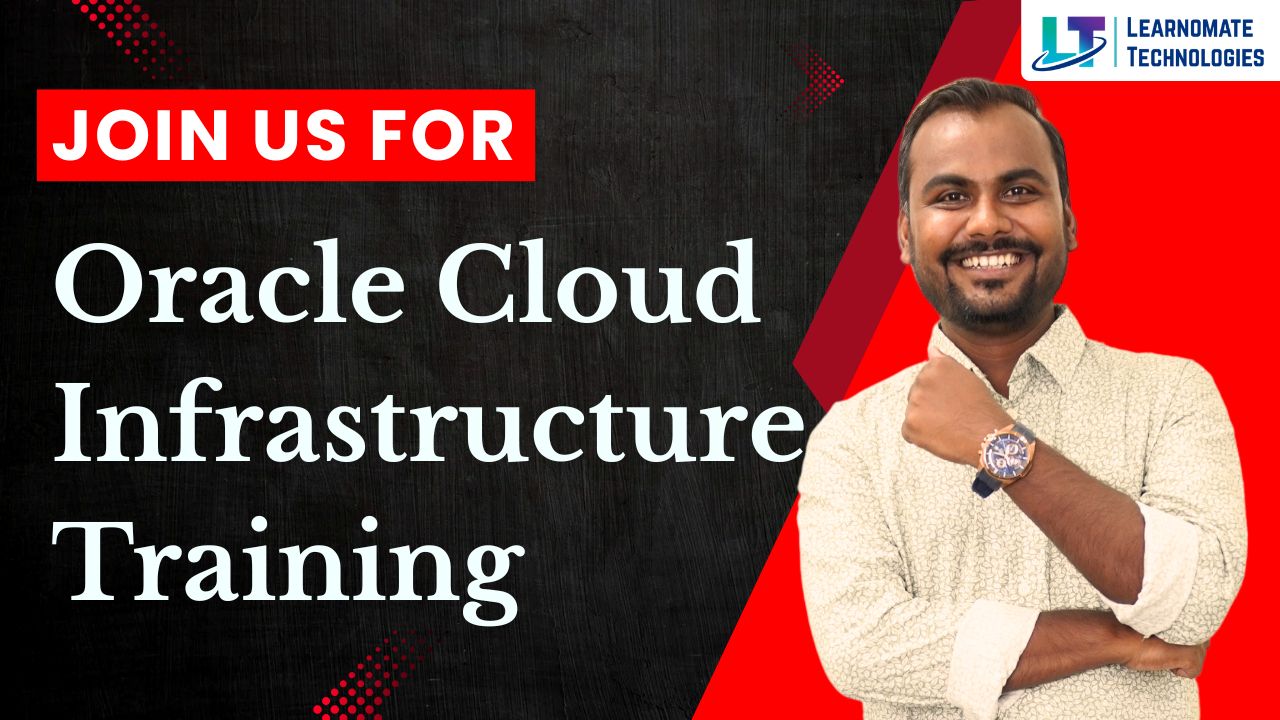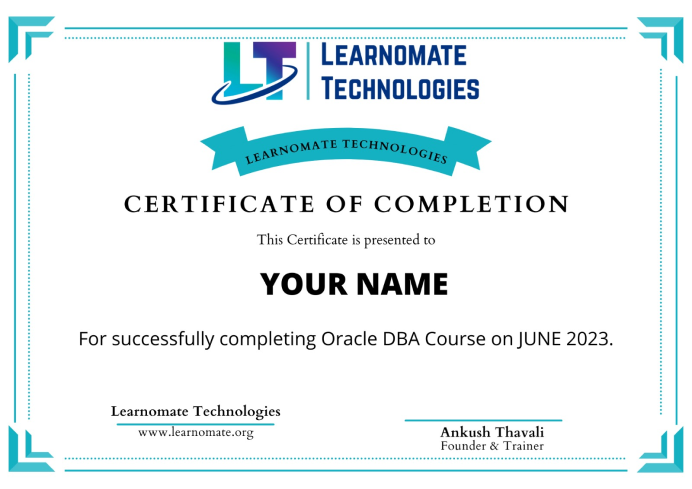Learn Oracle Cloud Infrastructure (OCI) with Learnomate Technologies covering compute, storage, security and Database.
Learn how to enable the transformation of your technology infrastructure to the cloud with Learnomate Technologies’ OCI Training. Through hands-on labs, real-world use cases, you’ll gain the confidence to design, deploy, and manage robust cloud architectures that meet today’s business demands.


Your certificate and skills are vital to the extent of jump-starting your career and giving you a chance to compete in a global space.
Upon successful completion of any course at Learnomate Technologies, participants receive a certificate attesting to their proficiency in the respective subject matter. These certificates serve as tangible evidence of the skills acquired during the training, enhancing the credibility of individuals in the job market and validating their expertise to potential employers.
Get your Certification
We don't give just assurances, we actually placed candidates
This entire course content and our trainer helps you to get expertise and clear the certification program easily

We believe in giving the right guidance. Our team of career guide ninjas are ready to hear from you.
